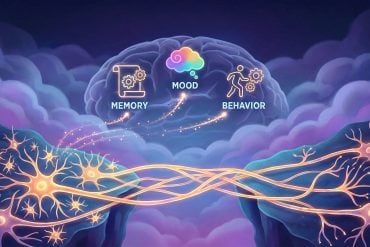Summary: A new study reveals that the brain can switch between slow and fast integration of information, allowing it to modulate the timescales on which it operates. The study also provides insight into how the structure of neural networks determines the speed at which information is integrated, which may have implications for future research on brain function and cognitive processes.
Source: Max Planck Institute
Changing between slow and fast integration of information, the brain can flexibly modulate the timescales on which it operates.
This is the result of a new study by an international team of researchers, now published in the journal Nature Communications.
Their analysis of experimental data from the visual cortex and their computer simulations also provide an explanation for how different timescales can arise and how they can change: the structure of the neural networks determines how fast or slow information is integrated.
Different processes in the brain happen on different timescales: While sensory input can be handled within tens of milliseconds, decision making or other complex cognitive processes may require integrating information over up to several minutes. Correspondingly, some areas in the brain are faster-paced than others.
These intrinsic timescales are not rigid and invariable. However, so far little was known about how they can adapt to different situations and tasks.
A team of researchers from Tübingen, Princeton, Stanford, Newcastle, and Washington has now investigated how the timescale of a brain area can vary during task execution.
Specifically, they asked: when a subject focuses their visual attention or redirects it to a specific point in space, how does that change the timescale of neural activity in the corresponding brain area?
To answer this, the researchers analyzed previously published data recorded from the visual cortex V4—the brain area involved in visual attention—of macaque monkeys during two different visual attention tasks.
For both tasks, the team observed that the neural activity unfolded not on a single timescale, but on at least two different ones: a slow and a fast timescale. Remarkably, the slow-paced timescale also changed during task execution: whenever the attention was directed to an area in the visual field, the slow activity in the corresponding neural populations became even slower. Moreover, they observed that the slower the activity, the shorter the reaction times.
“This may seem counterintuitive, but it is actually quite plausible,” comments Roxana Zeraati, researcher at the University of Tübingen and at the Max Planck Institute for Biological Cybernetics.
“A slow timescale means that there is a stronger correlation between the present state of the brain and its state a moment ago. When the neurons are attending to something, they remember their own past activity better, and this implies a slower timescale.”
Rich network structure enables flexible behavior
The researchers wondered how a network of neurons can create these different timescales.
“We tested three different hypotheses with computer simulations,” says Anna Levina, assistant professor in Tübingen and Zeraati’s Ph.D. advisor.
“Do we see the different timescales simply because some neurons operate faster and others slower? Or, as a second option, could their different biophysical properties be responsible? Only our third conjecture proved true: the answer does not lie in the properties of single neurons, but in the structure of the network.”

Depending on how the neurons are connected to each other, different timescales arise: so-called clustered networks, for example, generate slow timescales.
“You can compare a clustered network to the European road system,” explains Levina, who led the project together with her colleague Tatiana Engel from Princeton.
“Any two places in Paris are very well connected to each other, but it is a lot harder to get from a village in Burgundy to a beach in Portugal. At the same time, the airline network might look almost random. It is very hard to reach a nearby city, but you can go almost anywhere without many connecting flights. Networks that look more like airlines would not evolve as long timescales as the road network.”
The team was able to construct networks that replicated in the computer simulation exactly the timescales from the experimental data. The models also account for the observed modulations in timescales during tasks: the efficacy of interactions between neurons increases slightly, and this in turn changes the pace of neural events.
The findings could change our outlook on the brain: “Our experimental observations combined with the computational model provide a basis for studying the link between the network structure, functional brain dynamics, and flexible behavior,” the publication concludes.
About this neuroscience research news
Author: Press Office
Source: Max Planck Institute
Contact: Press Office – Max Planck Institute
Image: The image is in the public domain
Original Research: Open access.
“Intrinsic timescales in the visual cortex change with selective attention and reflect spatial connectivity” by Roxana Zeraati et al. Nature Communications
Abstract
Intrinsic timescales in the visual cortex change with selective attention and reflect spatial connectivity
Intrinsic timescales characterize dynamics of endogenous fluctuations in neural activity. Variation of intrinsic timescales across the neocortex reflects functional specialization of cortical areas, but less is known about how intrinsic timescales change during cognitive tasks.
We measured intrinsic timescales of local spiking activity within columns of area V4 in male monkeys performing spatial attention tasks. The ongoing spiking activity unfolded across at least two distinct timescales, fast and slow. The slow timescale increased when monkeys attended to the receptive fields location and correlated with reaction times.
By evaluating predictions of several network models, we found that spatiotemporal correlations in V4 activity were best explained by the model in which multiple timescales arise from recurrent interactions shaped by spatially arranged connectivity, and attentional modulation of timescales results from an increase in the efficacy of recurrent interactions.
Our results suggest that multiple timescales may arise from the spatial connectivity in the visual cortex and flexibly change with the cognitive state due to dynamic effective interactions between neurons.







